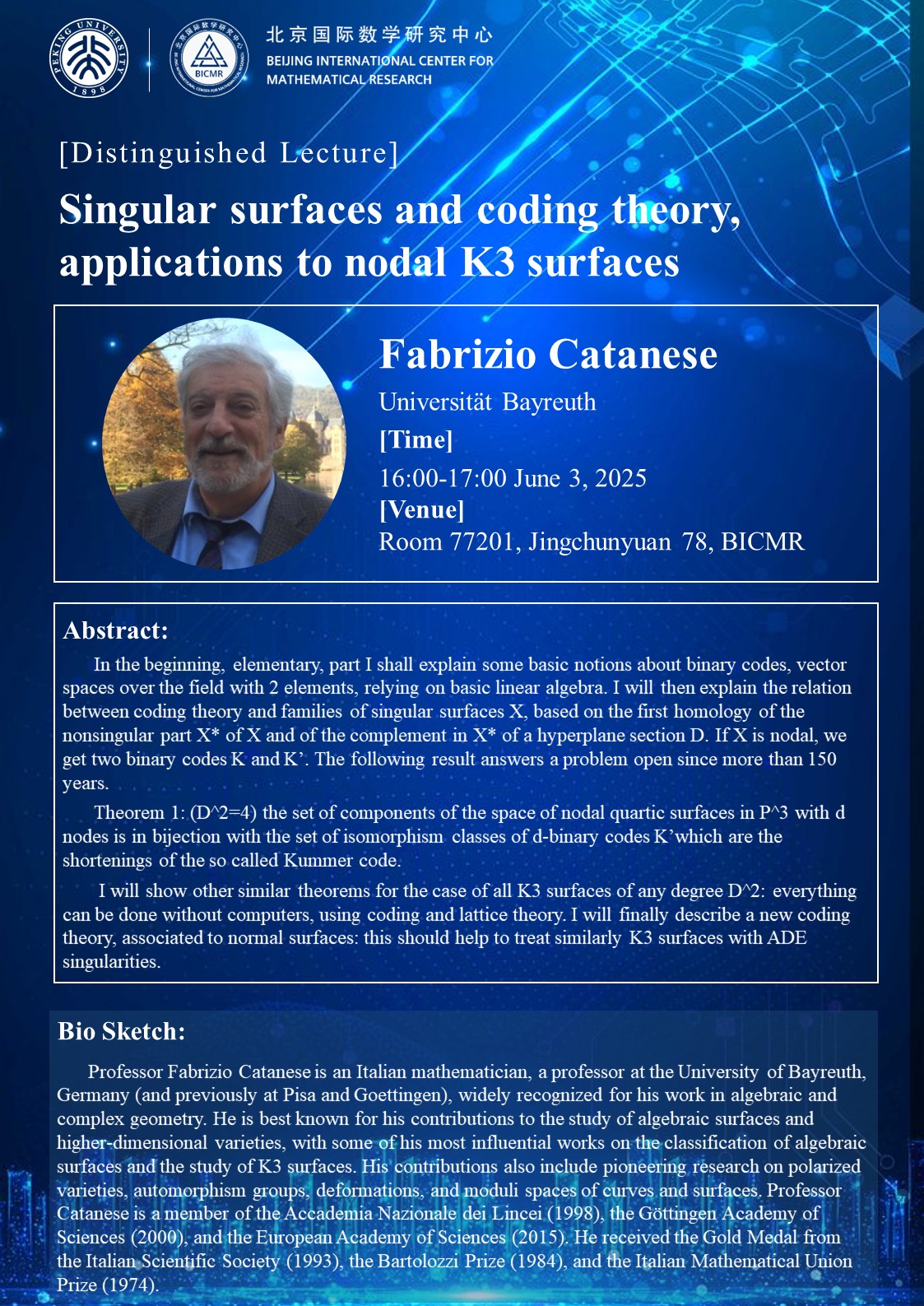[Distinguished Lecture] Singular surfaces and coding theory, applications to nodal K3 surfaces
Speaker(s): Fabrizio Catanese (Universität Bayreuth)
Time: 16:00-17:00 June 3, 2025
Venue: Room 77201, Jingchunyuan 78, BICMR
Abstract:
In the beginning, elementary, part I shall explain some basic notions about binary codes, vector spaces over the field with 2 elements, relying on basic linear algebra. I will then explain the relation between coding theory and families of singular surfaces X, based on the first homology of the nonsingular part X* of X and of the complement in X* of a hyperplane section D. If X is nodal, we get two binary codes K and K’. The following result answers a problem open since more than 150 years.
Theorem 1: (D^2=4) the set of components of the space of nodal quartic surfaces in P^3 with d nodes is in bijection with the set of isomorphism classes of d-binary codes K’which are the shortenings of the so called Kummer code. I will show other similar theorems for the case of all K3 surfaces of any degree D^2: everything can be done without computers, using coding and lattice theory. I will finally describe a new coding theory, associated to normal surfaces: this should help to treat similarly K3 surfaces with ADE singularities.
Bio-Sketch:
Professor Fabrizio Catanese is an Italian mathematician, a professor at the University of Bayreuth, Germany (and previously at Pisa and Goettingen), widely recognized for his work in algebraic and complex geometry. He is best known for his contributions to the study of algebraic surfaces and higher-dimensional varieties, with some of his most influential works on the classification of algebraic surfaces and the study of K3 surfaces. His contributions also include pioneering research on polarized varieties, automorphism groups, deformations, and moduli spaces of curves and surfaces. Professor Catanese is a member of the Accademia Nazionale dei Lincei (1998), the Göttingen Academy of Sciences (2000), and the European Academy of Sciences (2015). He received the Gold Medal from the Italian Scientific Society (1993), the Bartolozzi Prize (1984), and the Italian Mathematical Union Prize (1974).



